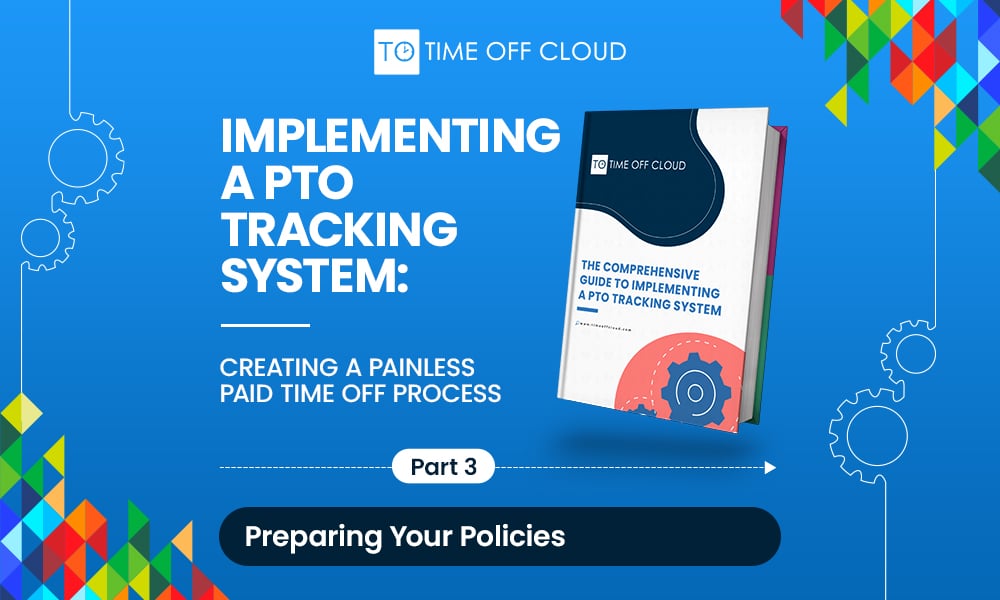Creating a Painless Paid Time Off Tracker Process – Preparing Your Policies
In our previous posts (Part 1 and Part 2), we discussed the importance of a comprehensive time off tracker process and the types of time off you may wish to include. Next up – the logistics of your time off benefits. What questions do you need to answer when writing your policies?
The Details Your Employees Want to Know
Construct your new time off policy by answering the following questions:
- Which types of time off will you offer?
- When is time off paid, and when is it unpaid?
- How much of each type of time off is available?
- Who is eligible for each program?
- Under what circumstances does each type of time off apply?
- How does paid time off accrue?
- Are there limits or blackout periods when you do not allow certain types? (e.g., Black Friday for retailers)
- What is the process for requesting time off and obtaining the necessary approvals?
- What happens to accrued time not used during the plan year?
- What happens to accrued time if employees leave the company during the plan year?
Some companies publish individual policies for each type of time off. Others put together a comprehensive guide that covers all related information. In either case, make sure to communicate the policy/policies to team members and address questions or concerns before they need time off.
More Logistics: Plan Dates, Eligibility Dates, Anniversary Dates, and Rollover Dates
Any time off benefits you offer revolve around a pre-set schedule, and it is your job to create and implement that schedule.
First, consider your plan dates. Do time off programs mirror the plan year for medical and dental, or will you use an alternative method of allocating time off? Benefits plan year, fiscal year, and anniversary date are common choices. However, you do not have to group all of your benefits schedules together. You may decide a custom time off plan year is appropriate.
Second, determine when new hires are eligible to accrue and use time off. For example, do they have to work for a certain amount of time before they can take paid sick days?
Third, it’s a common practice to encourage retention by offering additional time off benefits as employees hit milestone anniversaries. Will you include that in your plan? If so, when do increased time off benefits start?
Finally, make sure your policy includes details on what happens when employees do not use accrued time off during the plan year.
Accurate, Up-to-Date Employee Information
Here’s the specific employee data you need to determine how your proposed policies will affect your business:
- Name
- Employee ID Number
- Anniversary Date
- Benefit Start Date
- Title
- Department
- Manager
Next, have a look at their status under your current programs:
- Current Allocated Time Balance
- Current Accrued Time Balance
- Year-to-Date Time Taken
- Any exceptions to existing and future policies (e.g., an employee who negotiated an extra week of vacation during the hiring process)
Compare your employees’ current time off benefits to the benefits they will receive under your proposed policies, so you can determine the cost to your business.
Don’t Forget the Lawyers
Now that you’ve drafted your policies and you clearly understand how these benefits will affect your business, it’s time to get buy-in from the stakeholders and decision-makers. Make sure senior leaders and your HR partners are on board and get their formal sign-off before moving on to the next step.
Your legal advisor is the last stop to ensure your policies comply with federal, state, and local regulations. Employment law is complex, and violations can cause serious consequences. Even an error that seems minor can generate major fines, penalties, legal fees, and reputational harm.
But How To Get Rid of Time Off Attendance Tracking Spreadsheets?
You have your policies, and you know which employees are eligible for which benefits. But we haven’t said anything about who is going to track accruals and balances. Don’t worry, we didn’t forget.
Our next installment:
Part 4: Creating a Painless Paid Time Off Process with Automated Time Off Tracking Technology
If you can’t wait for the next installment – or you want more detail – we have good news. The full Comprehensive Guide to Implementing a PTO System is available for download today.


